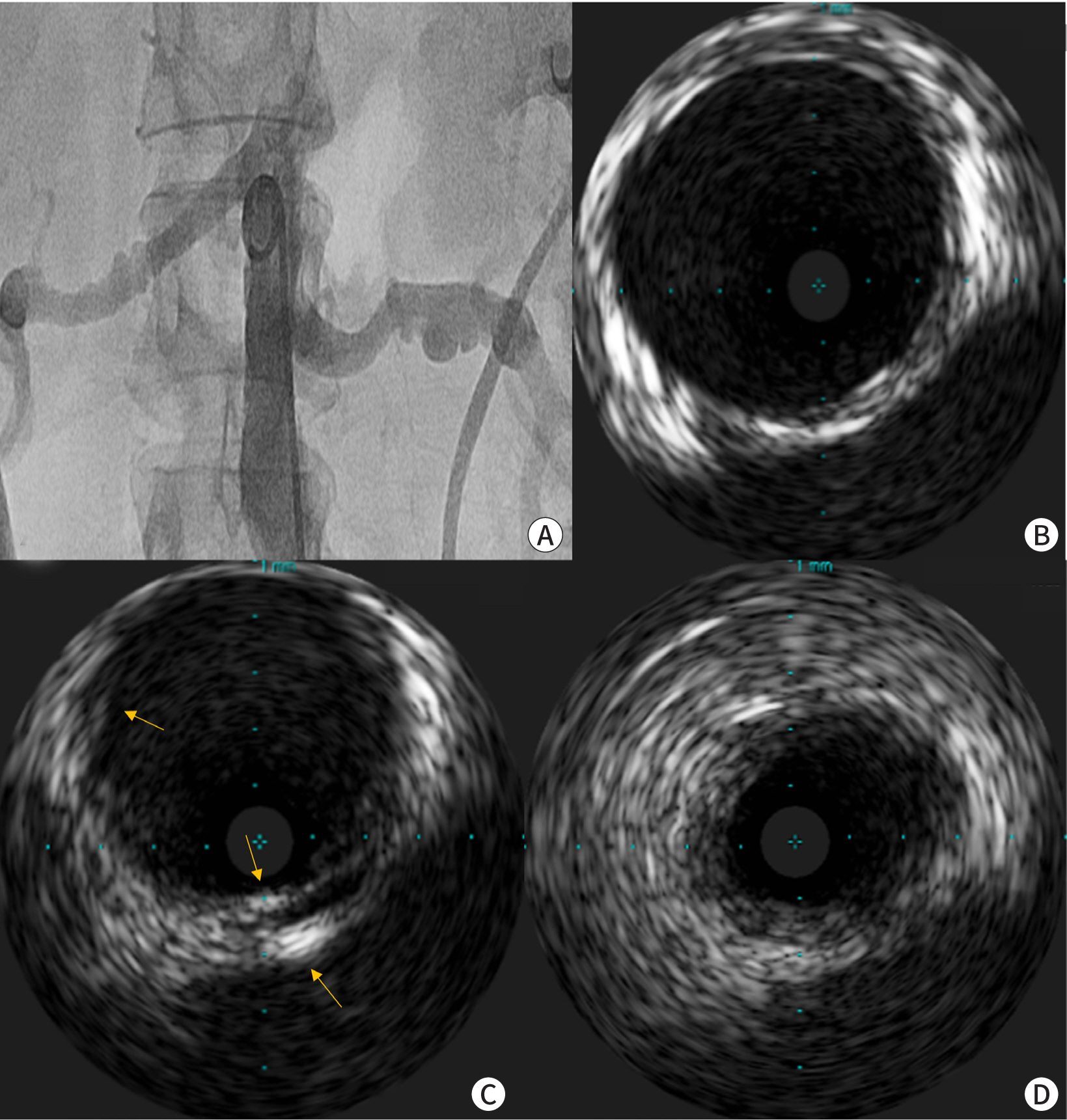Ewha Med J.
2023 Oct;46(4):e21. 10.12771/emj.2023.e21.
Fibromuscular Dysplasia Involving the Iliac Artery and Mimicking Atresia of the Left Iliac Artery
- Affiliations
-
- 1Division of Cardiology, Department of Internal Medicine, Ewha Womans University Mokdong Hospital, Ewha Womans University College of Medicine, Seoul, Korea
- KMID: 2547925
- DOI: http://doi.org/10.12771/emj.2023.e21
Figure
Reference
-
References
1. Olin JW, Gornik HL, Bacharach JM, Biller J, Fine LJ, Gray BH, et al. Fibromuscular dysplasia: state of the science and critical unanswered questions: a scientific statement from the American Heart Association. Circulation. 2014; 129((9)):1048–1078. DOI: 10.1161/01.cir.0000442577.96802.8c. PMID: 24548843.
- Full Text Links
- Actions
-
Cited
- CITED
-
- Close
- Share
- Similar articles
-
- Treatment of Fibromuscular Dysplasia of the Abdominal Aorta Causing Renovascular Hypertension and Aneurysm: A case report
- Hypoplasia of Left Vertebral Artery with Intimal Fibromuscular Dysplasia in a Korean Woman
- Ureteral Stricture from Retroperitoneal Fibrosis Caused by Isolated Common Iliac Artery Aneurysm
- Fibromuscular Dysplasia of the Distal Internal Carotid and Middle Cerebral Artery
- The inferior epigastric artery arising from the internal iliac artery via a common trunk with the obturator artery



